The 6 Biggest Watch Trends of 2025
Industry experts weigh in on what’s hot in the watch world right now.
September 25, 2025

Photographs courtesy of brands; Collage: Gabe Conte
In the fashion world, a trend can catch fire in a matter of weeks, blazing hot before getting played out just as quickly. With watches, it’s more of a slow burn. Due to production times and costs, brands prefer to wait and see if a trend has long-term heat before jumping aboard the hype train. Yet once these hot trends show some staying power, they can have a profound impact on the direction of the watch industry.
While trends may move differently in the watch world, they often spring from the same well of inspiration as other industries: pop culture, new and advancing technologies, and cyclical design preferences. Celebrities have the power to inflate the value of certain styles, brands, and even models (Just look at the “Paul Newman” Daytona, or the more recent “John Mayer”). Technology expands what’s possible in the industry, whether that’s increasing accessibility to watchmaking or broadening the types of usable materials. Trends influence everything from size, shape, and dial color to the type of watches that are in vogue, bouncing from stainless steel sport pieces to elegant dress watches.
In order to gather intel on the hottest trends in the watch world right now, we turned to the esteemed Watch Illuminati to identify six and figure out whether or not they’re here to stay.
Unusual Case Shapes
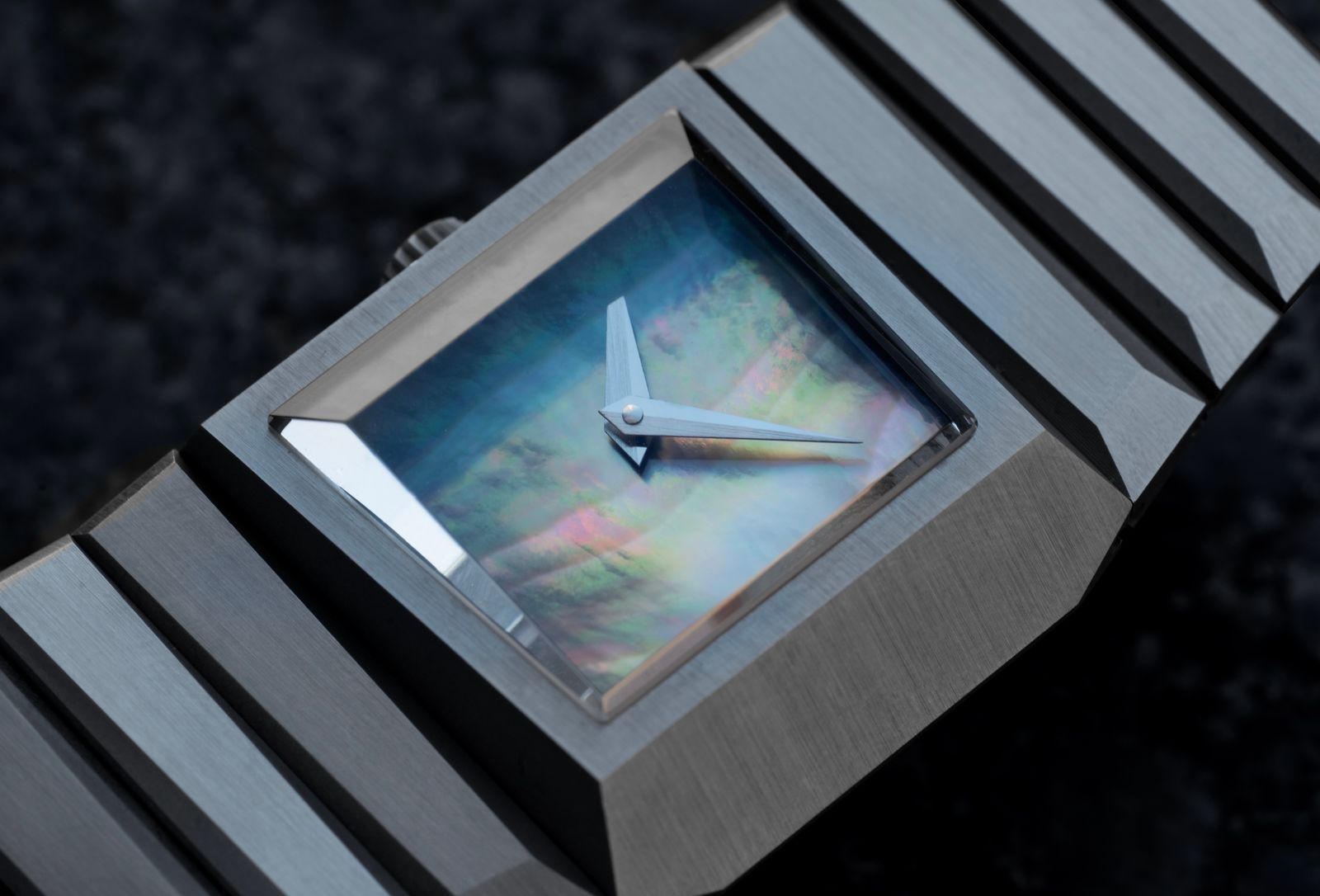
Toledano & Chan
Over the past couple of years, case shapes have gotten bolder and more untraditional than ever before. “Unconventional case shapes are having a moment: Space One, Berneron, Toledano & Chan, and Anoma have gotten tons of attention from the collector community for their striking case shapes,” says Kathleen McGivney, CEO of the famed watch get-together community Redbar Group. “What’s interesting is that all these pieces have adopted different designs; there’s little form or consistency. This isn’t a trend towards tourneau (meaning barrel-shaped) or octagonal cases; it’s a trend towards creating cases that we’ve never seen before.”
These brands are bringing individuality to an industry with only a few notable examples of such radical thinking. “As someone who has always liked the Cartier Crash, I love that there are brands out there taking the risk of putting out something with case shapes that vary from triangular (Anoma A1) to asymmetrical brutalism (Toledano & Chan B/1) to Dali-esque (Berneron Mirage) to downright out-of-this-world wrist spaceships (Space One’s Jumping Hour and Worldtimer models),” McGivney says. These watches look more like something you’d find onboard the Millennium Falcon than on your wrist. Meanwhile, brands like MB&F have shown for years that there is a place in modern watchmaking for the crazy and eccentric. It’s only recently that the quantum leap from high horology to the mainstream has been made.
Are unusual case shapes here to stay?
“I hope this trend will continue!” McGivney says. “It’s always hard to predict what will resonate with watch collectors, but I think it’s safe to say that all of these brands have captured the attention of the collecting community.” What will be interesting to see is how far brands are willing to go with their case shapes. Will there be a point where the watch community thinks we’ve gone too far? “We’ve not reached that point yet,” she says.
Stone Dials
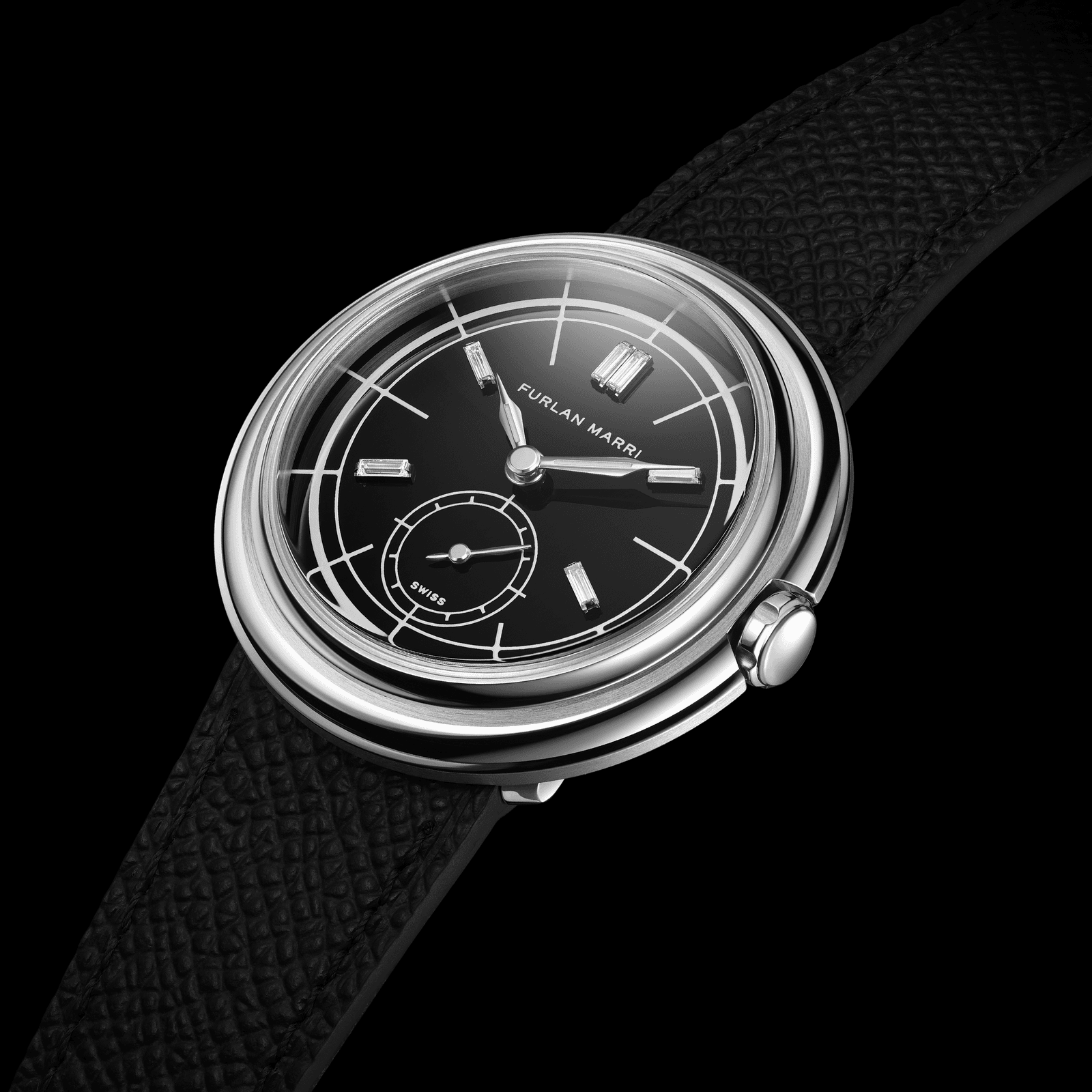
Furlan Marri's new Onyx-dial Disco Volante
Stone dials aren’t new. Over the years, we’ve seen various stones, including opaline, lapis lazuli, and even meteorite, used in dials. “Stone dials used to be the preserve of fabled brands like Piaget, Vacheron Constantin, and Rolex,” says Andrew McUtchen, founder of the watch publication and shop Time+Tide. “The ‘Warhol’ from Piaget is a TV-shaped delight—pure disco-era glamour. Onyx-dial Day-Dates in yellow gold from Rolex remain peak elegance.”
However, it’s only now that these styles of watches are starting to get mainstream recognition. For one, these dials have historically been very expensive, but modern production methods now means you can pick up stone dials for under $2,000. “It’s great to see more accessible examples now from brands like Baltic and Furlan Marri,” McUtchen says.
Secondly, there’s now an appreciation that no two stone dials are the same, so you can be confident no one else will be rocking the same rock as you. “Just look at Rolex’s striated, sexy ’Tiger Iron’ GMT-Master II, with its vicious streaks of iron deposits slashing across the golden tiger eye. Every single dial is different,” McUtchen says. That’s the real pull: individuality, texture, rarity. “It’s your watch and only your watch,” he says.
Are stone dials here to stay?
McUtchen is emphatic: “Stone dials are here and here to stay. This isn’t a passing Instagram fad. Stone dials scratch the itch for authenticity in an age of AI and endless sameness. Brands are betting big on them, and collectors are rediscovering the joy of a dial that feels alive.”
’70s Design
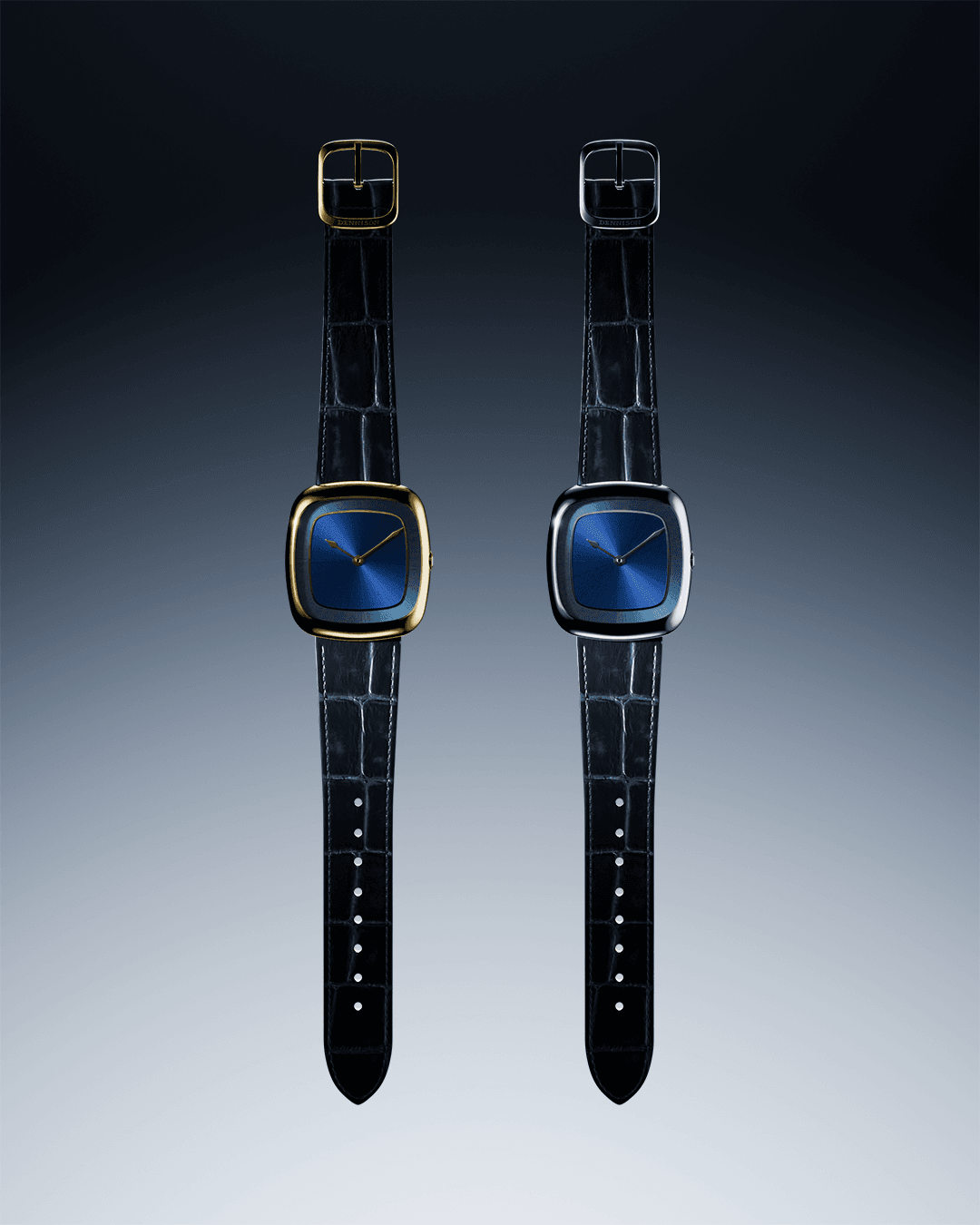
Dennison x Collectability's ALD
The ’70s was an era of boldness: Think flares, platform shoes, tie-dye, and aviator sunglasses. Watch designs followed suit, moving away from conservative rounded cases and limited dial colors. However, the watch industry moved quickly to keep up with the daring fashion trends of the day (all while dealing with the invention of quartz watches, which were powered by simple battery-powered movements that were more affordable to mass produce and more accurate at telling the time).
“Seventies design trends in general seem to be returning,” says Mark Cho, cofounder of The Armoury. “This trend is exemplified by features like stone dials and unusual case shapes.” The ’70s would turn out to be a big decade for the watch world with the launch of two of its biggest icons: the Patek Philippe Nautilus and the Audemars Piguet Royal Oak (both of which came from the brain of Gérald Genta, the industry’s most famous designer). At the time, the design of these watches was seen as totally far out. “There are a lot of great vintage examples of ’70s design people are discovering, such as the Omega Chronostop, Piaget Polo, and Cartier Vendôme,” Cho says. These design cues are also starting to appear in many current models, like the Timex Enigma 1975, Dennison ALD, and King Seiko Vanac.
Is ’70s design here to stay?
Seventies design is having its moment right now. For some, it’s a nostalgic throwback while others are discovering a new era. “I think the trend will be around for a while,” Cho says. “In terms of style, we are in a moment of baroque streetwear with a lot of detail and decoration, so the two trends are a good match. These unusual shapes are novel to younger collectors and modern manufacturing techniques are allowing for evolution as well.”
Precious Metal Comeback
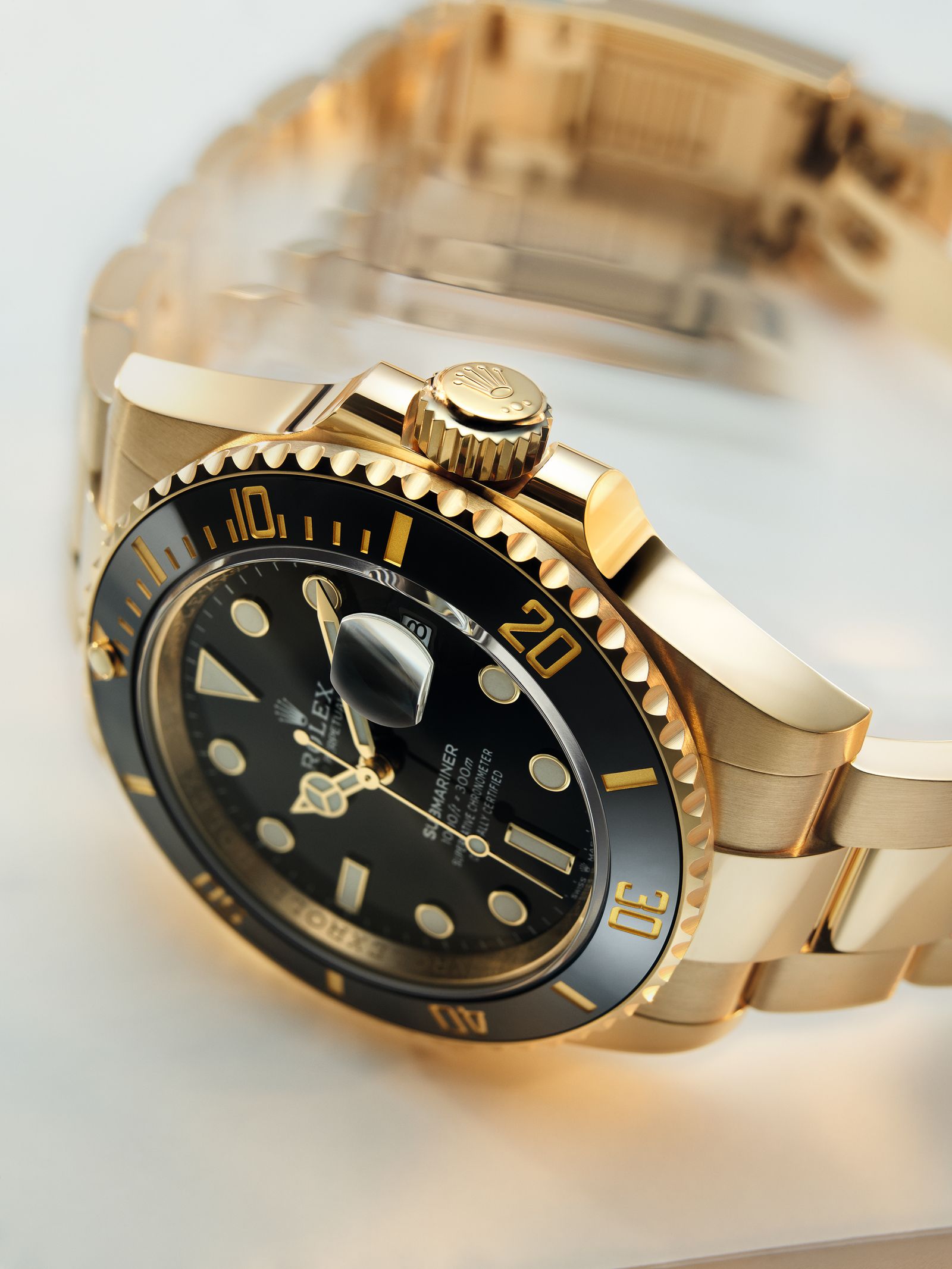
Courtesy Rolex | Florian Joye
Gold and other precious metals have been a mainstay in this world since the invention of pocket watches in the 1500s. And it’s not that these types of pieces ever went away, but they certainly ceded some of their cache to stainless steel sport watches over the past couple of years. However, the days of the Daytona and Nautilus having a steel grip over collectors are starting to wane.
“The demand is especially strong for the solid gold pieces of Rolex’s Submariner, Daytona, and GMT-Master II models,” says Paul Altieri, founder of Bob’s Watches. “What we’re seeing is that people really want watches they can wear every day but that still have a sense of exclusivity.” What’s interesting is that this trend isn’t just about a rising interest in vintage pieces. “The newer models with subtle updates—slightly larger cases, ceramic bezels, or upgraded movements—are driving a lot of excitement,” Altieri adds. “Buyers want something modern and versatile, but still instantly recognizable.” In many ways, it’s the art of the subtle flex: Not all precious metal watches are instantly recognizable from steel, but those in the know will be able to give you the nod of appreciation.
Is the precious metal comeback here to stay?
Altieri believes so: “I think this trend is here to stay. The appetite for solid gold Rolexes isn’t just about showing off anymore—it’s about owning a piece that feels substantial, timeless, and a little different from what everyone else is wearing. While certain dial colors or nicknames might come and go, the desire for modern Rolex in precious metals has always been strong and I don’t see that changing anytime soon.”
The Rise of Independent Watchmaking
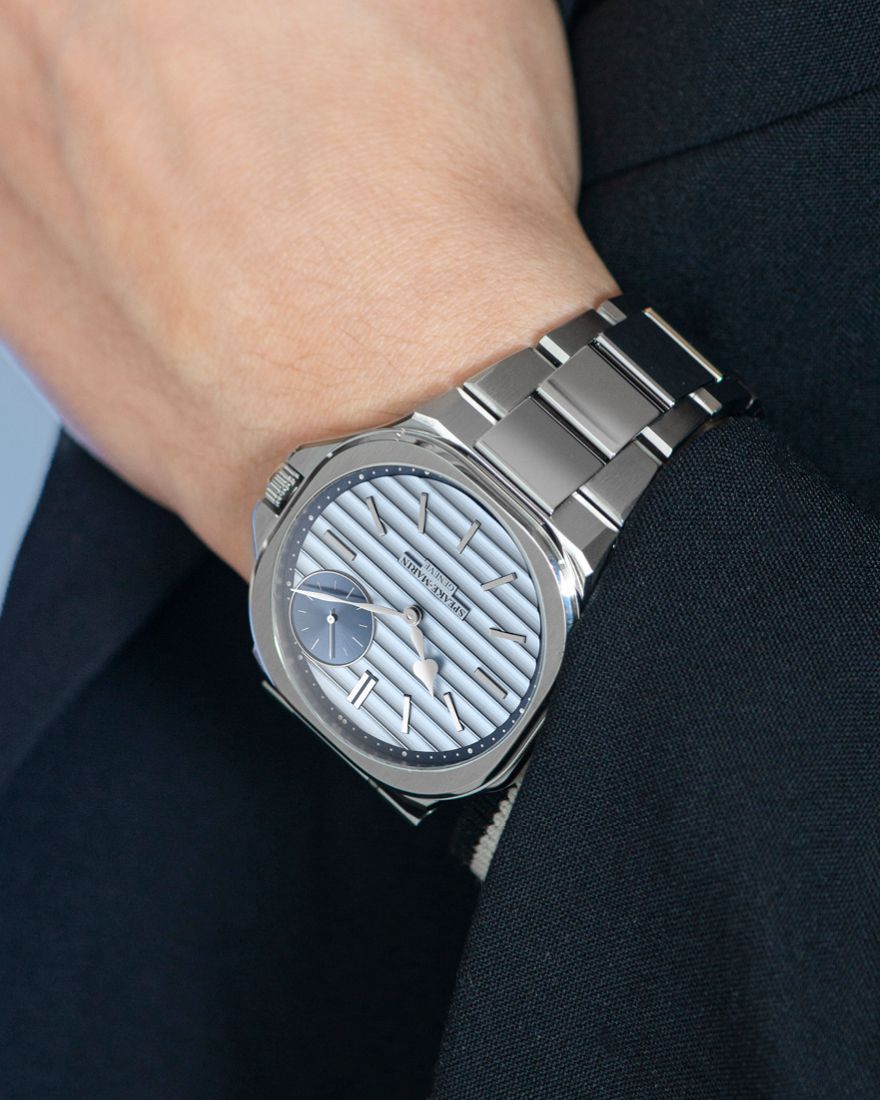
Speake-Marin's Ripples
As collectors have burrowed further down the rabbithole looking for the most interesting and unique watches possible, they’ve all ended up at the same destination: independent watchmakers. Nate Borgelt, Bonhams’ watch department head in America, has seen this firsthand. “Over the past few years, there has been growing interest in independent watches that aren’t part of the widely recognizable names everyone knows,” Borgelt says.
This hunt for independents is about looking for something not just different, but seeking out the truly exceptional master craftspeople. “The individual watch brands are started and usually maintained by individual watchmakers and their small teams, and we see these come to the table with unique designs that are innovative and well-crafted with finished movements,” says Borgelt. “Many of the brands in question are producing watches to a standard and quality that is hard to replicate via mass-production methods.” Some of the standouts include Kari Voutilainen, Rexhep Rexhepi and his brand Akrivia, Speake-Marin, Vianney Halter, and Naoya Hida & Co. “These aren’t household names but they’ve built reputations founded on quality of craftsmanship rather than brand marketing,” Borgelt says.
Is independent watchmaking here to stay?
As long as there are avid watch collectors, there will always be a market for quality independent makers. “There is a growing affinity for independent watches that are pushing watchmaking into new directions, and this trend will continue as seasoned collectors look for something different than the brands that dominate the market,” Borgelt says. “The interest seems to be at a new fervor and will translate into more independent watch brands getting the attention they deserve beyond inner watch circles and aficionados.”
Strap Hacking
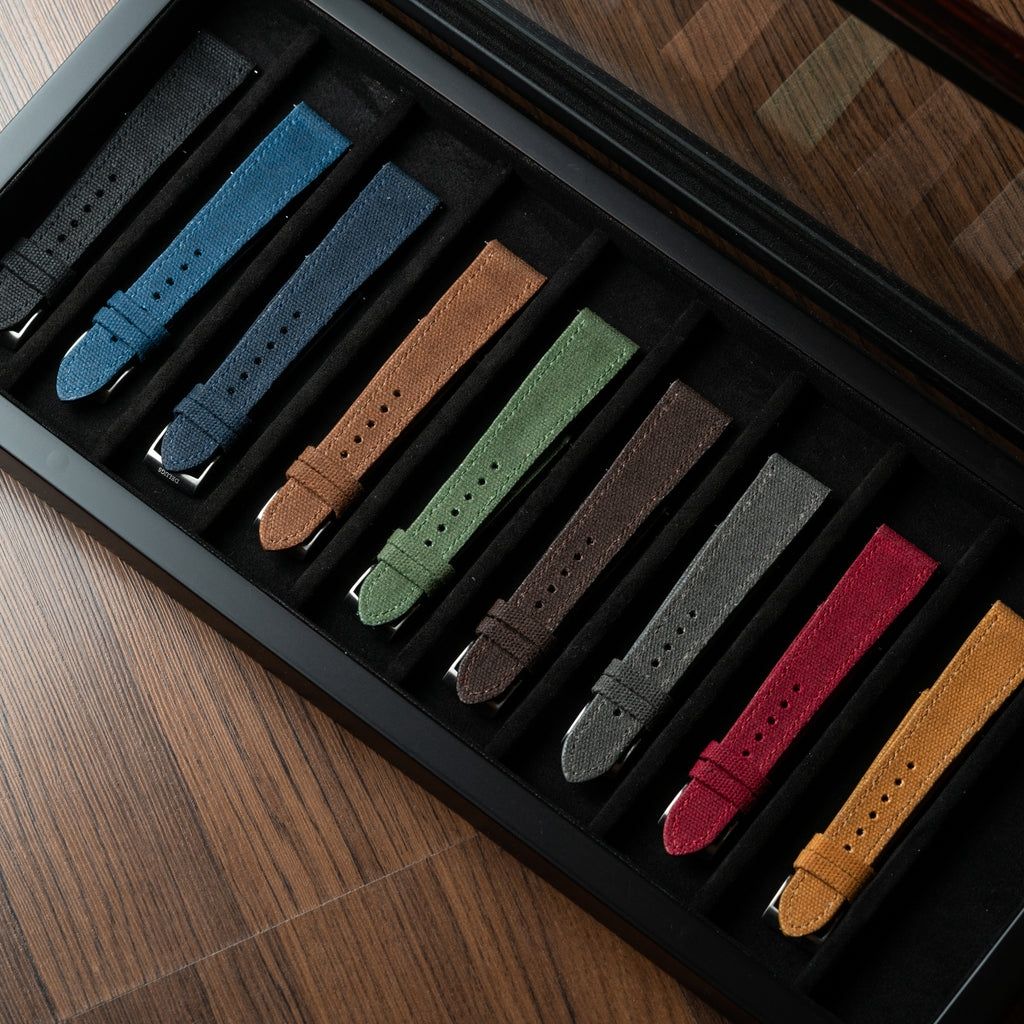
While one of the members of the Illumanti didn’t speak to this trend directly, we’d be remiss to leave it off. If you ever find yourself getting bored of a watch, try switching out the strap. A new color or material can completely change the look. This little hack has been growing in popularity and Kevin O'Leary, a.k.a, Mr. Wonderful, with his infamous red strap, has been giving it plenty of airtime. Now sophisticated strap makers have become experts at creating straps designed for specific watches. Brands like Delugs make a variety of options just so you can customize your MoonSwatch. Or if you’ve ever wondered what a Rolex Submariner would look like on a rubber or nylon strap, there are options for that as well.
Rather than fight the rising tide, brands are embracing this push toward customization with the development of their own quick-release strap systems. Each brand tends to have its own way of switching out the strap, and anything that removes the need for a spring bar tool is a big win in my book. Vacheron Constantin now provides several of its popular Overseas models with multiple straps as standard. The interchangeable bracelet and rubber strap can be switched with the push of a button.
Is strap hacking here to stay?
In one word, yes. If anything, the number of strap options available is only going to grow with new designs and new materials. Many collectors will now look favorably on a watch that allows for strap hacking over one that doesn’t. What will be interesting to see is how many additional variants of their own straps the brands produce, like Vacheron, or if they’ll leave that to the third-party strap producers.
James is a GQ contributor whose love affair with watches started when his grandad left him a two-tone Tissot. From that moment, he was hooked and has been daydreaming about watches ever since. Over the years, his passion for watches has expanded beyond collecting and dinner party conversation. What started ... Read More